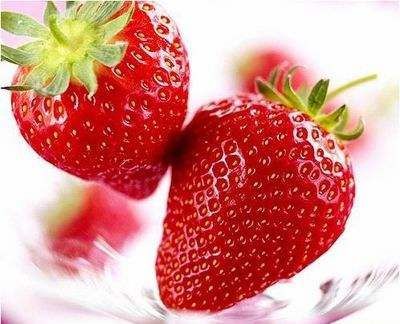When the types of fruit and vegetables on our table and the places of origin are becoming more and more abundant, the problem of pesticide residues has not been interrupted. “Which vegetables and fruits may have more pesticides, which fruits and vegetables contain less pesticide?†and “How can we minimize the amount of pesticides that we eat?†has become the subject of many people’s most frequent talks. Some people use this as an opportunity to sell fruit and vegetable detoxifiers and pesticide degradation agents. In order to help the people solve the confusion, "Life Times" reporter recently interviewed experts in vegetables, fruit tree cultivation, food safety, pesticide testing and other aspects, and asked them to analyze in detail for everyone.
Cucumbers, strawberries, and rape are more pesticides.

From 2008 to 2009, Greenpeace conducted sampling inspections on 17 kinds of vegetables and fruits in several large supermarkets in Beijing, Shanghai, and Guangzhou. The results showed that the top three pesticide residues were cucumbers. , containing 4-13 different types of pesticide residues; strawberries, containing 1-13 species; rape, including 1-12 species; followed by cowpea, sugar orange, Dutch beans, lentils, mustard, small tomatoes and spinach. Although the Ministry of Health specifically responded to this, pointing out that the pesticide residues in these fruits and vegetables did not exceed the standards set by the state, but in the hearts of the people, there were still some suspicions and shadows.
“Actually, the problem of pesticide residues in fruits and vegetables is not as serious as we thought.†Jiang Wei, deputy dean of the College of Food Science and Technology at China Agricultural University, and Li Leite, a doctoral supervisor, pointed out to the “Life Times†reporter that 90% of the market More fruits and vegetables are in line with national pesticide residue standards.
However, in the cultivation of vegetables and fruits, it is true that due to various reasons, some pesticides are used slightly, while others are slightly less. Chen Chunxiu, a senior agronomist at the Vegetable Research Center of the Beijing Academy of Agriculture and Forestry Sciences, told reporters that carrots, potatoes, cabbage, Chinese cabbage, lettuce, parsley, and pesticides are all relatively small; while kidney beans, onions, leeks, cucumbers, tomatoes, canola, and eggplant are used. More pesticides. China National Agricultural University's Department of Nutrition and Food Safety, any of Jiguo pointed out that, in general, leafy vegetables have more pesticide residues than root vegetables, because their leaves are soft, watery, and insects love to eat; roots are buried under the ground Insect bugs. Liu Jun, an associate researcher at the Institute of Forestry and Fruit Research at the Beijing Academy of Agriculture and Forestry Sciences, pointed out that cherries, early peaches, and apricots are all fruits that have fewer pesticides. However, due to the origin, species, and other reasons, the pesticide residues in each vegetable and fruit are very different and cannot be generalized.
How Experts Analyze the Secrets of Pesticides
"Do you know the law of pesticide residues in a leafy vegetable?" He Jiguo said that the root pesticides are the most, followed by the stem, then the leaves and the fruit. Among these, there are many secrets that are not known by people in urban areas that are far from the farmland. Chen Chunxiu and Liu Jun have analyzed them one by one.
1. Kidney beans, leek pesticides; cucumber, tomato fungicide and more. Cowpea loves longworms and uses larger amounts of pesticides when planting them. Like onion and leeks, the roots are prone to grow pests and other pests, often with relatively heavy pesticides, some of which have high toxicity and are likely to remain. Cucumbers and tomatoes have a high humidity environment and are prone to illness. Generally, they are used in large amounts, and fungicides are used more often. However, bactericides are less harmful to the human body than insecticides.
2. Cabbage is actually a dish. Cabbage is generally grown in the autumn. It only uses some insecticides to control aphids and diamondback moths at the seedling stage. It takes a long time to reach the market, which means that everyone eats vegetables far and pesticide residues are small. The same is true for cabbage and lettuce.
3. There are few pesticides in the greenhouse. In greenhouses, pests can be controlled by physical methods such as anti-virus nets, and therefore fewer pesticides are used. In contrast to the greenhouse vegetables, it is an open field dish that looks more natural, but it is more difficult to prevent diseases and insect pests. More pesticides are used than greenhouse vegetables.
4. It is safest to eat leafy vegetables in winter. Leafy vegetables in winter and spring fall are safe because there are few insects and almost no pesticides are used. However, we must be careful about eating in summer, because at this time not only there are many insects, and almost all greenhouse vegetables have been received. The vast majority of vegetables sold in the vegetable market are exposed vegetables, and there are many pesticide residues.
5. A fragrant dish can eat more. Artemisia stalks, garland chrysanthemum, parsley, etc. have a very strong aroma, and are natural insect repellents. There are few bugs and these vegetables do not need pesticides.
6. Among the wild vegetables, only the bracken is the most natural. The wild vegetables do not have any pesticide residues. However, only the bracken is a natural wild vegetable that grows in the mountains. The leeks and leeks are almost artificial. There are few pesticides used in leeks, and leeks are prone to aphids and pesticides are more common.
7. Don't be fooled by worm-eaten fruits and vegetables. There are only insect eyes on vegetables and fruits, and there are no bugs, which means that insects were killed by pesticides. In addition, vegetables with wormholes were applied closer to the harvest time, and the decomposition of pesticides was less and the residues were high.
8. Shorter growth cycle of fruit pesticides. For example, cherries, from sprouting to fruit ripening, have only 2 months and it is impossible to fight too much pesticide.
9. There are fewer fruits and pesticides in famous places. Xinjiang has a dry climate, few pests and fruits, and fewer pesticides. There are apples and pears in Shaanxi and Shanxi, which are also less pesticide residues than in the south.
How to reduce the amount of pesticides eaten
He Jiguo believes that although most fruits and vegetables are in line with national standards, the amount of pesticides they contain is not enough to cause damage to health. However, these substances ultimately need to be metabolized by the liver and kidneys. The more intake, the greater the burden on the liver and kidneys. Heavy, so we still have to minimize the intake of pesticides.
Experiments at the Food College of China Agricultural University have shown that the use of tap water to soak vegetables for 10 to 60 minutes followed by a slight rinse can remove 15% to 60% of pesticide residues. However, He Jiguo reminded that for waxy fruits and vegetables such as eggplants, green peppers and fruits, it is best to soak before washing. Jiang Weiwei said that immersing vegetables in small pieces will cause pesticides to infiltrate. The best way is to maintain the integrity of fruits and vegetables and rinse them with running water. It can also be soaked in light salt water or one or two times of Taomi water. The former can quickly dissolve pesticides, while the latter can neutralize the toxicity of pesticides, but do not soak for too long. In addition, sunlight can decompose and destroy some of the pesticides in vegetables. It has been determined that when vegetables are exposed to sunlight for 5 minutes, residual organochlorine and organic mercury pesticides can be reduced by about 60%.
High-temperature heating can also decompose pesticides, such as boiling water or frying oil. Experiments show that some heat-resistant vegetables, such as cauliflower, beans, celery, etc., washed with boiling water and then a few minutes, you can make the pesticide residue drop 30%, and then by high-temperature cooking, you can remove 90% of the pesticide.
Although vegetable peeling will cause some nutritional loss, it can reduce pesticide residues. Chen Chunxiu reminded, especially cucumbers, eggplants and other pesticides used more vegetables and most of the fruit, it is best to peel to eat. Jiang Weiwei said that when eating apples, it is best to eat less of the portion around the core, because the gap in the core can cause pesticides to infiltrate.
For fruit and vegetable detergents, the director of the residue department of the Ministry of Agriculture's Pesticide Verification Office does not recommend using too much of it, because the benzene ring in its chemical structure is highly toxic, and the hazards caused by residues on fruits and vegetables may be higher than pesticide residues. Still serious. In recent years, popular pesticide degradation agents, fruit and vegetable detoxification machines, etc., experts believe that they can not play a role in all pesticides. Pesticide degradation agents are known to use biological enzymes that can degrade pesticides into carbon dioxide and water. Shan Weili said that they had conducted comparative tests on the effects of some pesticide degradation agents, and their effects were very unstable. Fruit and vegetable detoxification machines claim to be able to use ozone water to eliminate pesticides on the surface of fruits and vegetables, but it is more of a bactericidal effect, and it is difficult to destroy the chemical structure of some pesticides. “In fact, the impact of pesticide residues on food safety is not as serious as everyone thinks, so everyone can be more careful in life, but there is no need to panic.†said Shan Wei.
The electric wheelchair is based on the traditional Manual Wheelchair, superimposed high-performance power drive device, intelligent operating device, battery and other components, transformed and upgraded.
A new generation of intelligent wheelchairs equipped with artificially operated intelligent controllers that can drive the wheelchair to complete forward, backward, steering, standing, lying, and other functions. It is a high-tech combination of modern precision machinery, intelligent numerical control, engineering mechanics and other fields. Technology Products



Wheelchair,power wheel chair,surgical equipment,medical equipment
Shanghai Rocatti Biotechnology Co.,Ltd , https://www.shljdmedical.com